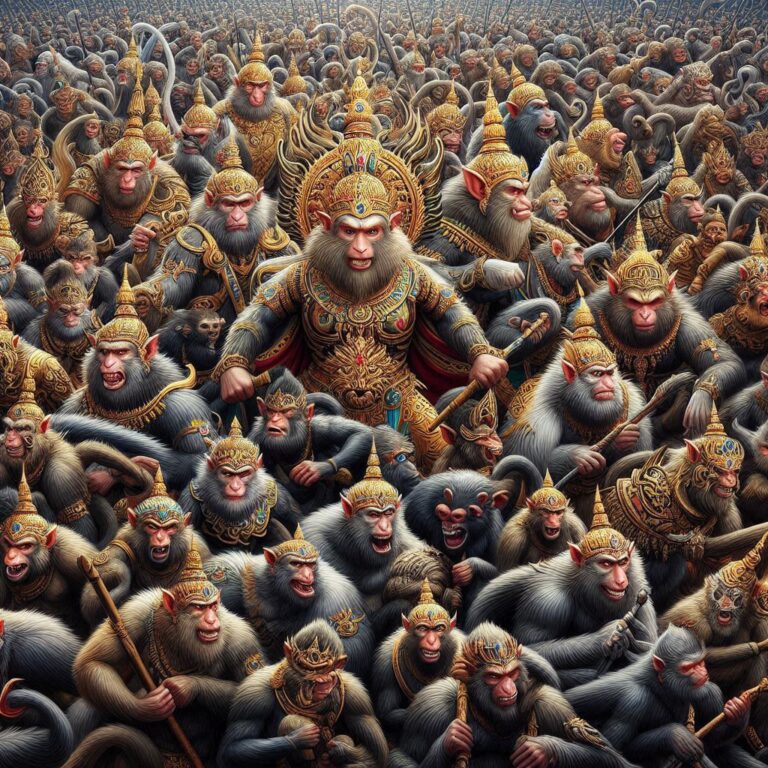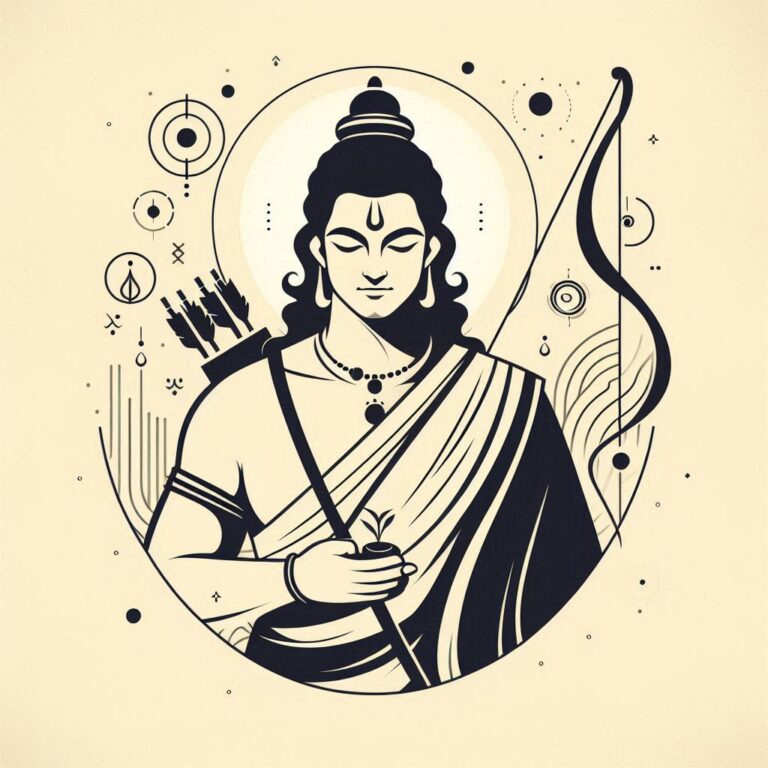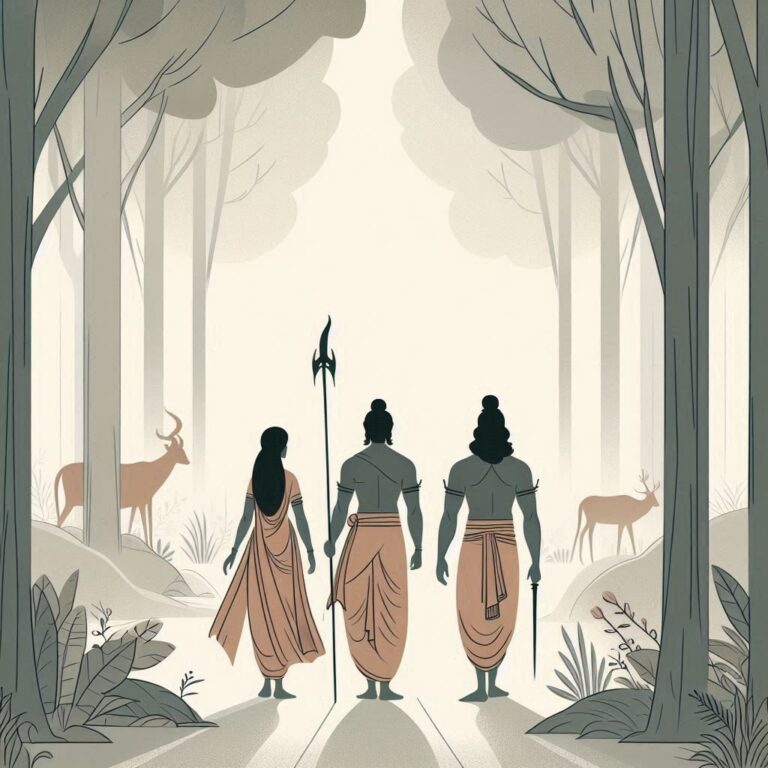Epic Clash of Lanka: Unleashing the Battle of Good vs. Evil
The Clash of Lanka: The Battle Begins
The stories of ancient epics captivate our imagination like no other. They weave tales of valor, righteousness, and epic battles that define the human experience. One such tale that echoes through time is the Battle of Lanka from the revered text of Ramayana. This battle isn’t just a skirmish but a colossal clash embodying the eternal fight between good and evil. In this article, we will explore the prelude to the battle, the characters involved, and the deeper meanings behind this legendary confrontation.
Setting the Stage: What is the Battle of Lanka?
Before we dive into the battle itself, let’s set the foundation. The Battle of Lanka is part of the Ramayana, a timeless epic attributed to the sage Valmiki. It narrates the story of Lord Rama, who embarks on a quest to rescue his wife, Sita, from the demon king Ravana. This epic confrontation isn’t merely a fight; it symbolizes the struggle against darkness and immorality, illustrating the ultimate triumph of Dharma (righteousness).
So, why is this battle so significant? Well, it’s not just about arrows and swords. It’s about ideals, virtues, and the choices we face in our lives. The forces of good, represented by Rama and his allies, clash with the dark and cunning Ravana. This powerful dichotomy invites us to reflect on the battles we all face every day—our righteous decisions against temptations that may lead us astray.
The Characters: Heroes and Villains
To fully grasp the magnitude of the Battle of Lanka, we must familiarize ourselves with the key players:
Lord Rama: The Epic Hero
Rama is often seen as the ideal man—strong yet compassionate, a warrior yet a caring husband. He embodies Dharma and stands against the wrongdoings of Ravana. His willingness to go to any lengths for righteousness speaks volumes about his character.
Sita: The Captured Queen
Sita, Rama’s wife, represents purity and devotion. Her abduction by Ravana sets the stage for the entire epic, compelling Rama to rescue her. What strength lies in her character! She is not just a damsel in distress; she often showcases immense valor and resilience throughout the story.
Ravana: The Demon King
Ravana is often misunderstood. While he is the antagonist, he is also a learned scholar and a devotee of Shiva. His arrogance and desire lead him to enact evil, showcasing how even the greatest strengths can turn against oneself. Isn’t it fascinating how complex villains can be?
Hanuman: The Divine Monkey God
Enter Hanuman, the epitome of devotion and strength. As Rama’s ardent devotee, he plays a crucial role in the battle, showcasing the power of unwavering faith and loyalty. His character teaches us that even the smallest among us can do great things when driven by love and righteousness.
The Vanaras: The Monkey Army
Led by Hanuman, the Vanaras are not mere beasts; they symbolize camaraderie, bravery, and the spirit of teamwork. Their role in the battle emphasizes that strength often lies in unity.
The Prelude to Battle: Gathering Forces
As tensions rose and the stage was set for the impending battle, both sides prepared relentlessly. Rama’s army, consisting of noble warriors and the Vanara forces, began to gather strength. On the other hand, Ravana fortified his kingdom of Lanka, surging his demon army.
What preparations were made? Let’s look at some key events!
- Alliances Formed: Rama sought alliances with various kings and creatures to strengthen his cause. This highlights the importance of collaboration and teamwork in times of struggle.
- Divine Intervention: According to legends, Rama secured divine blessings, which played a vital role in boosting the morale of his army.
- The Building of the Bridge: The iconic bridge to Lanka, built by the Vanaras, symbolizes the connection between man and divinity, showcasing human effort bolstered by divine grace.
Symbolic Significance
The bridge, known as Rama Setu, has a deeper symbolic meaning. It represents the bridges we must build in our lives—between various aspects of ourselves, with the divine, and even with others. It’s a narrative that urges readers to take initiative in their pursuits, even if the task seems monumental.
The Clamor of War: The Battle Begins
As dawn broke, the battle horn echoed through the air like a clarion call. The atmosphere was charged with excitement, fear, and anticipation. Imagine standing on a battlefield, surrounded by warriors ready to fight for their beliefs! It must have been both exhilarating and terrifying.
Early skirmishes and tactical maneuvers
The battle commenced with skirmishes between the armies. Each side displayed mighty tactics, often calling upon the essence of their respective values.
Ravana’s Strategy:
- Relying on sheer brute force, Ravana sent his best warriors to overwhelm Rama’s armies.
- He showcased strategic planning, using deception to lure Rama’s forces into traps.
Rama’s Counter-strategy:
- Rama, along with Hanuman and Sugriva, adapted to the changing tides of combat and utilized superior strategies.
- They effectively used the knowledge of their terrain, turning the battlefield into their advantage.
The Use of Divine Weapons
The battle soon escalated, and with it, the use of powerful celestial weapons. Each hero would invoke divine blessings, showcasing their prowess and enhancing the stakes of the struggle.
But what does it mean for us today? This reminds us that sometimes, we have to tap into our inner strength or seek help from a higher power to confront our battles.
Epic Clashes: The Highlight of the Battle
As the war raged on, several epic moments stood out. Heroes emerged, sacrifices were made, and the line between good and evil blurred in the heat of battle. Classic shlokas and dohas remind us of these epic moments:
Shlokas and Dohas
-
शुक्रात्तारकयामिष्ठा, ज्चन्द्रोऽभिकाङ्के च परिश्रमेणैव।
- Shukarattarakayamiṣṭhā, jchandro’bhikāṅke cha pariśrameṇaiva.
- (With the moon in the sky and the stars, darkness can only be conquered through diligent effort.)
-
कष्टानां च पञ्चाबुद्धिं नैवोपेक्ष्य गन्तव्यम्।
- Kaṣṭānāṁ cha pañcābuddhiṁ naivopekṣya gantavyam.
- (In moments of hardship, never dismiss the power of the five intellects.)
-
यत्र धर्मस्तत्र जयः।
- Yatra dharmastatra jayaḥ.
- (Where there is righteousness, there is victory.)
-
संकल्पोऽसि साधनं, संकथामिजलैः।
- Saṅkalpo’si sādhanaṁ, saṅkathāmijala.
- (Your determination is your strength; let’s not waver.)
-
रामं तत्त्वं च तनुति धर्मं, सञ्जनाय च।
- Rāmaṁ tattvaṁ cha tanuti dharmaṁ, sañjanāya cha.
- (Embrace the essence of Rama who exemplifies righteousness.)
These verses not only resonated through the battlefield but also remind us of the ideals we must uphold in our lives.
The Turning Point and Climax
As the battle raged on, key confrontations led to unforeseen twists. The turning point emerged when Rama faced Ravana in a direct combat. Each strike of their weapons echoed the moral struggles that humanity faces.
The Confrontation of Rama and Ravana
This showdown is not just about physical strength. It reflects the internal struggles faced by both character. While Ravana, embodiment of ignorance and arrogance, unleashed his fury, Rama represented clarity and wisdom.
Isn’t it intriguing how external battles often mirror internal conflicts? Just think of how we battle our vices, insecurities, or misconceptions daily. This confrontation enhances our understanding of personal growth in the face of overwhelming adversity.
Conclusion: The Legacy of the Battle of Lanka
The Battle of Lanka remains an eternal symbol of the struggle between good and evil. While Rama and his allies emerging victorious is a plot point in the Ramayana, the true victory lies within the principles taught through this epic battle.
The battle teaches us that in our day-to-day struggles, we must find the courage to fight for what is right, embrace strength in unity, and remain devoted to our values. Just as Lord Rama led his army to victory, we can face our inner demons with determination and righteousness.
As we honor and reflect upon the Battle of Lanka, let’s strive to embody the virtues presented in this epic. Whether it’s loyalty, righteousness, or unwavering courage, each quality forms the cornerstone of a fulfilling life.
FAQs
-
What is the significance of the Battle of Lanka?
- The Battle of Lanka symbolizes the eternal clash between good and evil and teaches lessons on righteousness, loyalty, and courage throughout its narrative.
-
How did Lord Rama prepare for the battle?
- Lord Rama prepared for battle by forming alliances, invoking divine support, and strategizing with Hanuman and the Vanaras.
-
What role did Hanuman play in the battle?
- Hanuman played a critical role as Rama’s devoted ally and warrior, showcasing strength, intelligence, and fierce loyalty against the forces of Ravana.
-
What is the moral lesson from the Battle of Lanka?
- The moral lesson from the battle revolves around the importance of fighting for righteousness, embodying virtues, and believing in the power of unity and support in the face of adversity.
-
How is the battle depicted in modern interpretations?
- Modern interpretations of the battle often emphasize its themes of morality, inner conflict, and the relevance of its lessons in contemporary society, serving as a guide for personal and collective growth.








